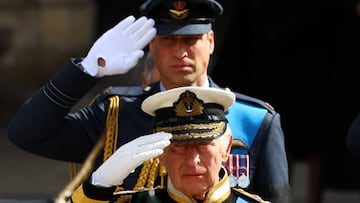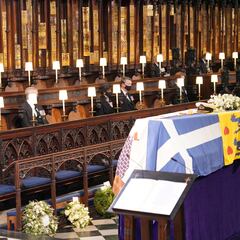What will the King Charles III era be known as?
British history is defined by royal eras, from the Elizabethan to the Georgian to the Victorian, but it is unlikely King Charles III will oversee a Charlesian period.

Throughout the history of the British Isles, several periods have become instantly identifiable by the name of the royal era assigned to them: the Tudor period evokes images of Henry VIII’s excesses and the Reformation, when England broke ties with the Catholic Church in Rome and established the Church of England. The Tudor era, which also included the Elizabethan period, was a time of enlightenment and literary excellence led by Shakespeare and Marlowe. The draining Wars of the Roses were in the past and the country opened to global trade and commerce, and to seafaring derring-do from the likes of Francis Drake and Walter Raleigh.
Victoria (1837-1901)
— The Cultural Tutor (@culturaltutor) September 17, 2022
Called the grandmother of Europe, for how many of her descendants became monarchs around the continent. Wore only black after the death her beloved Prince Albert in 1861. The Victorian Era.
57/63 pic.twitter.com/7u2CUFAVy9
British history defind by royal eras
That period of history is also remembered for the Tudors’ singular response to any kind of obstacle. Henry VIII’s to-do with the Holy See was based purely on his desire to wed whomever he chose and off-with-her-head with his preferred method of annulment. Elizabeth I’s decision to execute Mary Queen of Scots in 1587 was based on a very genuine concern of a plot against her throne, and led to the Spanish Armada forming up off the coast of England a year later.
The Georgian era speaks to further excess, general disregard for the lowly British subject and a good dose of madness, the ascension to the throne of the first German Hanoverian monarch born in England, George III, the beginning of the industrial revolution and the loss of the American colonies in the Revolutionary War and, later, British military triumphs at Trafalgar and Waterloo.
The reign of Queen Victoria (1837-1901) ushered in full industrialization, the expansion of the British Empire, upon which the sun never set, and political reform but these were achieved on the back of famine, misery and pollution that provided the backdrop for the novels of Dickens. Victoria’s death heralded the short-lived Edwardian era (1901-10), a time of starched collars and stiffer manners, the suffragette movement, growing tensions with Germany and the adoption of more and more European fashions, including staying up beyond the informal 7pm curfew of the Victorian era.
The First World War and George V’s decision to change the styling of the British royal house from the House of Saxe-Coburg and Gotha to the House of Windsor brought an effective end to the habit of naming eras based on the reigning monarch. George V and George VI - Elizabeth II’s father - would rule for a combined total of 42 years punctuated by the two World Wars but the Georgian era remains firmly rooted in the 18th century. Similarly, although the reign of Elizabeth II is being informally referred to as the Second Elizabethan era, the true Elizabethan era will continue to belong to the Virgin Queen, the last of the Tudor monarchs.
MPs and Lords have gathered in Westminster where they will shortly receive The King to express their condolences.
— Charlie Proctor (@MonarchyUK) September 12, 2022
The King cannot attend Parliament itself due to the historic antics of Charles I, so they are meeting in the grand Westminster Hall. pic.twitter.com/F51YATuuAw
What happened to Charles I and Charles II?
As such, the reign of King Charles III, like those of his namesakes on the throne, is unlikely to be bestowed with a royal era per se, but the new monarch can at least expect a considerably more sedate sovereignty than Charles I and II.
Charles I is perhaps the most famous of all kings of England, Scotland and Ireland, and sat on the throne from 1625 until 1649 during the reign of the Stuarts from 1603 to 1714, a period also not committed to posterity by the royal titles of its ruling house. Charles’ reign was one of pomp in court and pestilence on the streets, political upheaval and, eventually, the English Civil Wars. Not one to bow to the demands of parliament for a loosening of religious straits and questions as to his right to rule, Charles I instead took to the field to settle a quarrel over the divine right of kings and was executed for treason in 1649 by the parliamentarian forces of Oliver Cromwell.
Related stories
The Royalist defeat in the Second English Civil War ushered in a brief republican period, known as the Commonwealth of England - with Scotland and Ireland later added – with Cromwell installed as Lord Protector. However, anti-monarchist zeal was short-lived and the commonwealth lasted for just 11 years before the Stuart restoration saw Charles’ son, Charles II, placed on the throne following a decade in exile. During what became known as the Restoration period, Charles II undid most of what the commonwealth had sought, dissolving parliament several times and ending his reign as an absolute monarch wielding even more arbitrary power than his father.
Charles II died of natural causes in 1685, from an apoplectic fit at the age of 54. Known during his time as the “Merry Monarch,” Charles was said to have been a popular king but he left no legitimate heir despite fathering, by his own admission, at least 12 children.


